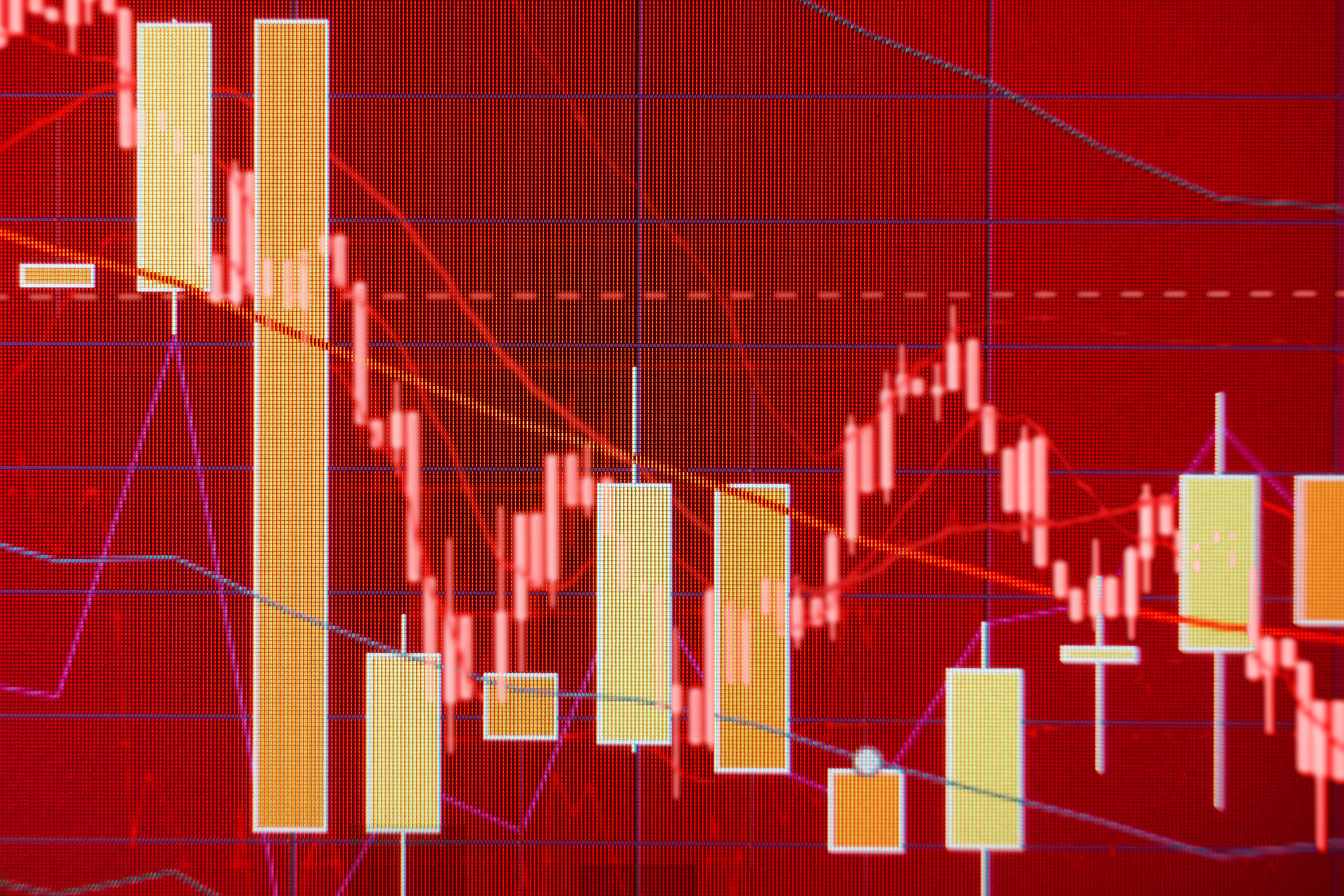19 Stocks for Cashing In on Holiday Cheer
If Americans shop till they drop, these companies are bound to benefit.
With the holiday shopping season now under way, you may wonder which companies will benefit the most from the merriment and gift giving. This year, consumers are in a better position to spend, thanks to a big drop in gasoline prices, an improving job market, rising home values and a multiyear rally in stocks. The National Retail Federation projects that holiday sales will increase by 4.1%, a full percentage point more than last year’s increase in holiday sales.
But analysts say the good cheer will not be spread evenly. For one thing, shoppers are still skittish about the economy. In September, when stocks began a temporary retreat, consumer spending fell 0.2%, compared with a jump of 0.3% for the same month in 2013. “There still remains some uneasiness and anxiety among consumers when it comes to their purchase decisions,” writes Matthew Shay, the chief executive officer of the NRF.
Another problem: the lack of a must-have fashion item. As a result, many retailers expect to have to discount heavily. “The promotional environment will remain very intense this season,” says Dana Telsey, the CEO of Telsey Advisory Group, a New York City stock research firm.
From just $107.88 $24.99 for Kiplinger Personal Finance
Become a smarter, better informed investor. Subscribe from just $107.88 $24.99, plus get up to 4 Special Issues

Sign up for Kiplinger’s Free Newsletters
Profit and prosper with the best of expert advice on investing, taxes, retirement, personal finance and more - straight to your e-mail.
Profit and prosper with the best of expert advice - straight to your e-mail.
Not all shoppers are ready to ramp up their spending. An annual survey by the Consumer Federation of America and the Credit Union National Association found that only 10% of consumers plan to spend more this year and that 33% plan to spend less. The results suggest that consumers are slightly more pessimistic than they were a year ago, when 13% of respondents said they would spend more and 32% said they would cut back.
Still, the NRF forecasts that the average shopper age 18 and up will spend $804 during the holidays, compared with $767 last year. If the traditional tie, sweater and Barbie won’t drive sales, what will? Athletic wear, accessories and electronics are likely to get shoppers to open their wallets, along with a few must-have toys and video games, Telsey says. Retailers with a strong Web presence may benefit, as more people shop from their home computer or smartphone. Stocks of companies in those categories have some of the best prospects for a year-end boost. The same can be said of companies that help make holiday transactions possible, such as shippers and credit card networks.
Here is our list of 19 stocks that should benefit from a robust shopping season. All prices and related data are as of November 24.
In electronics, Apple (AAPL, $119) is expected to carry the season. Sales of the new iPhone 6 and iPhone 6 Plus topped 10 million during the phones’ first weekend on the market, in September, setting a record for a launch weekend. Keith Bachman, an analyst at investment bank BMO Capital Markets, estimates that the tech giant will sell another 65 million iPhones from October through December.
That kind of demand is expected to help lift electronics retailer Best Buy (BBY, $39). Already, the stock has climbed 25.3% over the past three months, thanks in part to improving sales of mobile devices and ultra-high-definition televisions. The retailer is in the midst of a turnaround, which makes its stock riskier than Apple. But you’re not paying too much: Best Buy shares trade at just 15 times estimated earnings for the fiscal year that ends in January 2016, compared with competitors such as Wal-Mart Stores (WMT), which trades at 16 times earnings for the same period, and Target (TGT), whose P/E is 19.
It will be a dogfight for some companies to attract shoppers this holiday, but not so for athletic-wear retailers. “Women used to buy separate items for work, the weekend, the gym and parties,” says Telsey. “Now it’s buy for a party, and the other three functions can be combined.” She likes sneaker store Foot Locker (FL, $56) and footwear manufacturer Nike (NKE, $98), along with apparel makers Under Armour (UA, $70) and VF Corp. (VFC, $74), which owns The North Face, among other brands.
Accessories should be another bright spot, especially for Michael Kors Holdings (KORS, $76), which makes handbags, shoes, watches and other items. In a survey this fall, investment bank Piper Jaffray found that Kors was the preferred handbag brand of teenagers. The company’s blistering sales growth rate is starting to ease, but Lindsay Drucker Mann, an analyst at investment bank Goldman Sachs, says Kors is gaining ground on rival Coach (COH) and could capture more of Coach’s business during the holidays. “We see elevated risk to Coach’s fashion-forward, higher-priced product assortment,” Drucker Mann writes.
Kate Spade & Company (KATE, $32), which makes and sells handbags, shoes and other accessories, also looks promising. In its third-quarter earnings report, the company upped its 2014 outlook for direct sales (sales through its own retail stores and Web site). Previously, the company called for 15% to 17% growth in revenues. Now Kate Spade execs say sales will increase by as much as 21%. Tuna Amobi, an analyst at S&P Capital IQ, has a 12-month price target of $36 for the stock.
[page break]
Department stores that have invested heavily in online and mobile shopping platforms are likely to fare better than competitors. Nordstrom (JWN, $76) is making great e-commerce strides. Earlier this year, for example, the department store launched Nordstromrack.com, a Web site (with an accompanying mobile app) for the Nordstrom Rack outlet store and for HauteLook, the company’s flash-sale site. “No one in retail-land better understands the massive shift in consumer behavior away from malls and onto connected devices,” writes Piper Jaffray, which predicts that the stock will reach $81 in one year.
You can’t talk about holiday shopping without mentioning toys. The “it” item this year is anything related to the animated movie Frozen, Telsey says. That’s good news for Disney (DIS, $91), which released the film in 2013. It also benefits Mattel (MAT, $31) because the toymaker is licensed to make Frozen dolls, along with dolls of other popular Disney film characters. However, in the long term, competitor Hasbro (HAS, $57) may have the edge. The toy manufacturer takes over Mattel’s license for Frozen and Disney princess dolls, including Cinderella and the Little Mermaid, in 2016.
The holiday season is also the biggest selling period for video games. Increasingly, games are being sold online, which costs less than making and packaging traditional video-game discs. That should pad the profit margins of game-makers, says Edward Williams, a BMO analyst. He says Call of Duty: Advanced Warfare, by Activision Blizzard (ATVI, $21), and Grand Theft Auto V, by Take-Two Interactive Software (TTWO, $28), could be among 2014’s best sellers, helping lift the stocks of both companies.
Of course, to put presents under the Christmas tree, shoppers will have to rely on prompt delivery of their orders. Last year, winter storms and a surge in last-minute purchases overwhelmed carriers UPS (UPS, $107) and FedEx (FDX, $175), which failed to make millions of deliveries by Christmas. Learning from the experience, both firms have hired more workers this year and upgraded their shipping systems. If all goes well, lower oil prices and increased demand—UPS expects the number of packages delivered during December to be 11% higher than last year—will boost earnings for both companies.
Finally, if consumers do spend more this holiday season, they’ll likely use either their debit or credit cards when checking out, says Jim Lowell, chief investment officer at Adviser Investments, a money-management firm in Newton, Mass. That bodes well for American Express (AXP, $91), MasterCard (MA, $85) and Visa (V, $255). “Credit cards will be used heavily, so regardless of what consumers buy, you’ll be able to profit from those sales,” Lowell says. “It’s a good way to play the consumer holiday spending trend.”
Profit and prosper with the best of Kiplinger's advice on investing, taxes, retirement, personal finance and much more. Delivered daily. Enter your email in the box and click Sign Me Up.
-
 Vesting, Catch-Ups and Roths: The 401(k) Knowledge Quiz
Vesting, Catch-Ups and Roths: The 401(k) Knowledge QuizQuiz Test your understanding of key 401(k) concepts with our quick quiz.
-
 Why You Should Pay Attention to Company Guidance
Why You Should Pay Attention to Company GuidanceUnderstanding how corporate profit forecasts affect analysts’ estimates and stock ratings can help you make investment decisions.
-
 How to Protect Yourself and Others From a Troubled Adult Child
How to Protect Yourself and Others From a Troubled Adult ChildThis case of a violent adult son whose parents are in denial is an example of the extreme risks some parents face if they neglect essential safety precautions.
-
 Crypto Trends to Watch in 2026
Crypto Trends to Watch in 2026Cryptocurrency is still less than 20 years old, but it remains a fast-moving (and also maturing) market. Here are the crypto trends to watch for in 2026.
-
 Dow Slides 427 Points to Open December: Stock Market Today
Dow Slides 427 Points to Open December: Stock Market TodayThe final month of 2025 begins on a negative note after stocks ended November with a startling rally.
-
 If You'd Put $1,000 Into Coca-Cola Stock 20 Years Ago, Here's What You'd Have Today
If You'd Put $1,000 Into Coca-Cola Stock 20 Years Ago, Here's What You'd Have TodayEven with its reliable dividend growth and generous stock buybacks, Coca-Cola has underperformed the broad market in the long term.
-
 If You Put $1,000 into Qualcomm Stock 20 Years Ago, Here's What You Would Have Today
If You Put $1,000 into Qualcomm Stock 20 Years Ago, Here's What You Would Have TodayQualcomm stock has been a big disappointment for truly long-term investors.
-
 Stocks Extend Win Streak on Black Friday: Stock Market Today
Stocks Extend Win Streak on Black Friday: Stock Market TodayThe main indexes notched wins in Friday's shortened session, with the blue-chip Dow Jones Industrial Average closing higher on the month.
-
 Dow Adds 314 Points to Thanksgiving Rally: Stock Market Today
Dow Adds 314 Points to Thanksgiving Rally: Stock Market TodayInvestors, traders and speculators enjoy the best Thanksgiving Week gains for the major stock market indexes in more than a decade.
-
 Dow Falls 557 Points to Start NVDA Week: Stock Market Today
Dow Falls 557 Points to Start NVDA Week: Stock Market TodayThe Oracle of Omaha saw growth and value in certain corners of the stock market during the third quarter.
-
 Dow Dives 797 Points as Government Opens: Stock Market Today
Dow Dives 797 Points as Government Opens: Stock Market TodayThe process of pricing and re-pricing realities old and new never stops, and next week promises to be at least as exciting as this week.